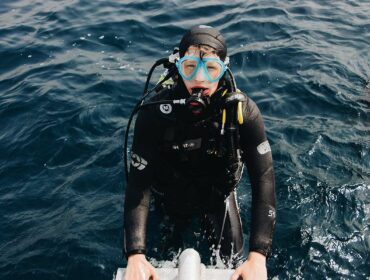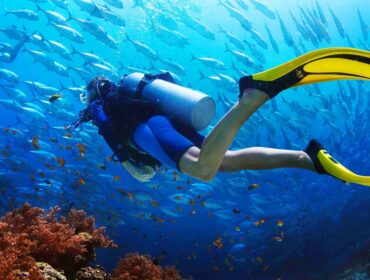Scuba diving is a sport that offers everyone a window to the underwater world, even people faced with physical barriers. The water which has always been used in physical therapy and recovery treatments, is a wonderful medium for those with disabilities to discover not only a whole new world but some freedom of movement in the water.
Unlike most sports for paraplegic people which require customized wheelchairs or equipment like in wheelchair basketball, cycling or rugby, there’s no such special scuba gear requirements if they would like try scuba diving. Once in the water divers disabled or not, both enter a world of weightlessness and persons that usually face mobility constraints on land find that they can move independently and easily underwater just like everyone else.
Who can dive?
While diving is possible with a variety of disabilities including paraplegics, quadriplegic, amputees, people with muscular dystrophy, people who are mentally challenged are the only exceptions. There is even the possibility of diving for many other people challenged with Cerebral Palsy, Downs Syndrome, Multiple Sclerosis and hearing and visually impaired depending on their condition.
However, participants should have no problems with their heart and circulatory, respiratory tract, nasal sinuses and the ears. These are however the same basic health conditions, which have to be met by divers without disabilities.
Special Organizations and Scuba Agencies for Training
HSA (Handicapped Scuba Association): Founded in 1981, the HSA is one of the leading bodies in this field. HAS’s training programs for people with disabilities are taught with the utmost safety using techniques developed with over 20 years of research. HAS’s Physical Performance Standards and multilevel Certification system facilitates the training of a wide range of disabilities, including paraplegia, quadriplegia, blindness and high-functioning brain injuries.
IAHD (International Association for Handicapped Divers) :The IAHD provides a training program, which is recognized by the major SCUBA organizations such as PADI, NAUI and SSI. In addition it has programs which train diving instructors to work with disabled people to try and counter previous skepticism encountered by pioneers in disabled diving.
PADI (Professional Association of Diving Instructors): The biggest and most recognized dive certification agency in the world PADI too offers special courses and scuba training for those with disabilities.
Learning to dive
Scuba divers after training are categorized according to their diving capabilities. A Level “A” divers must dive with at least 1 buddy. Level “B” divers are required to dive with at least 2 buddies. While the Level “C” divers must also dive with at least 2 buddies, with one of which must be a certified and trained CPR provider.The levels of certification however are the same and you can train as open-water diver right to instructor and course director level allowing you to train instructors.
So if you yourself or anyone you know need that are in an unfortunate limiting position, throw off those constraints and gift yourself or your loved one an opportunity of getting out of that wheelchair and into the blue to do something that 95% of people will never see and discover a whole new world underwater!


